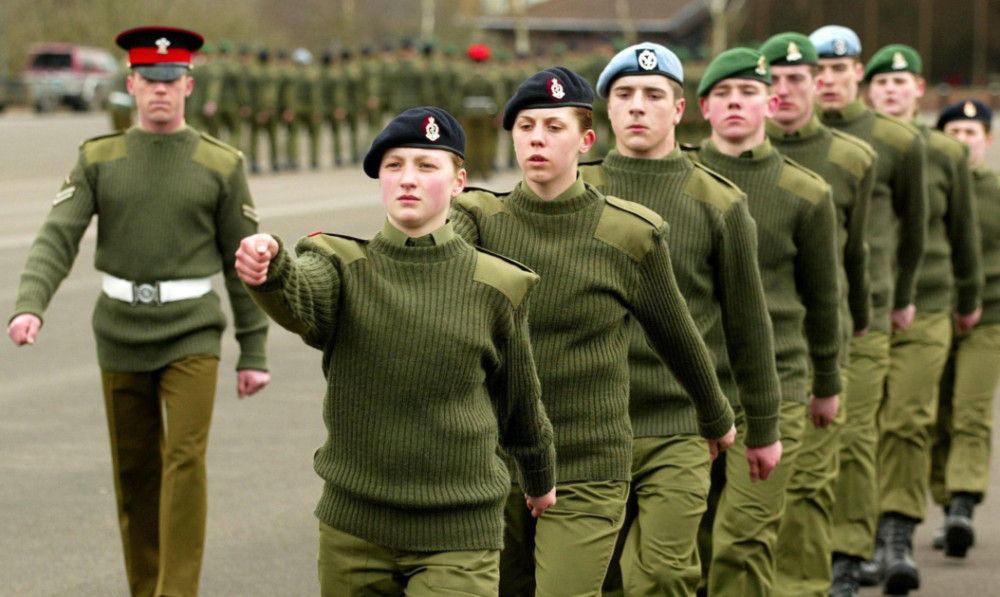Campaign groups have claimed the Ministry of Defence wastes up to £94 million a year training 16 and 17-year-old army recruits for roles which could be filled more cost-effectively by adults.
The report, by Child Soldiers International and ForcesWatch, found it costs the MoD twice as much to train a 16-year-old as an 18-year-old.
The organisations added that the UK was becoming “increasingly isolated” internationally in continuing to recruit people below the age of 18 into the armed forces.
The report found it cost an estimated minimum of £88,985 to recruit and train each new soldier aged 16 to 17-and-a-half, compared with £42,818 for each adult recruit, including salary costs.
Initial training for minors lasted either 23 or 50 weeks, depending on the recruit’s trade, but enlisting adults could complete the phase one course in 14 weeks.
The drop-out rate for minors was 36.6% compared with 28.3% for adults, but under-18s who complete training are likely to serve for 10 years rather than the 7.6-year average for over-18s.
As a result, the report finds the taxpayer would have saved between £81.5 million and £94 million a year had only adults enlisted, based on recruiting for a nominal 10-year career and accounting for differing trainee drop-out rates and average career lengths.
Tory MP and former army officer Patrick Mercer said the report needed to be examined carefully.
David Gee of ForcesWatch said: “Recruiting minors into the army is a practice from a bygone era. It’s not just young recruits who pay the price for outdated MoD policies taxpayers do too.
“And so does the army, when it finds itself undermanned on the frontline because so many minors have dropped out of training.”
A Ministry of Defence spokesman said: “We do not recognise the figures suggested in this report, which ignores the benefits and opportunities that a military career offers young people.
“There are currently no plans to revisit the Government’s recruitment policy for under-18s, which is fully compliant with United Nations Conventions.”
